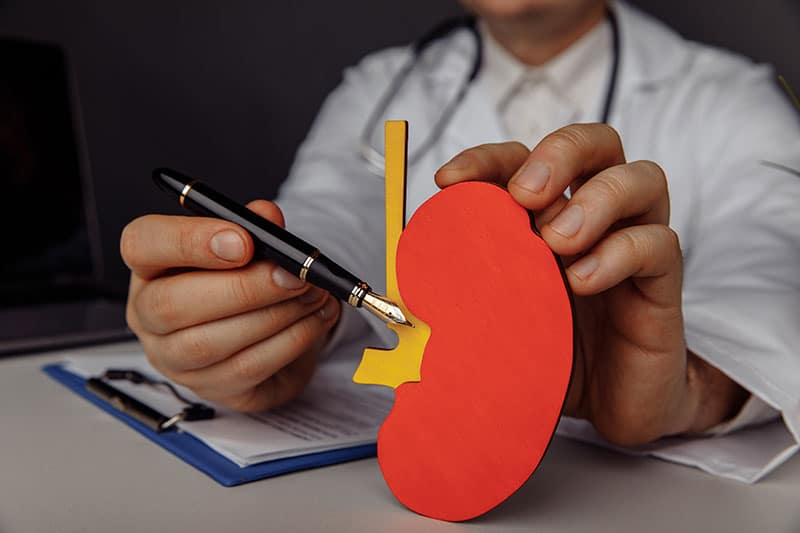
Table of Contents
Proper healthcare documentation is necessary to promote safe and effective patient care, meet compliance, and receive appropriate reimbursement for rendered services. electronic health records (EHRs) are designed to enable providers to document patient health information and share it with other providers and systems. Many facilities rely on medical transcription services to ensure timely, accurate and comprehensive information in EHRs.
Every medical specialty has specific documentation requirements. Like other specialists, nephrologists have to manage their documentation tasks and deal with time constraints and patient compliance issues while treating people with serious medical conditions. Knowledge of nephrology documentation requirements is crucial to:
- Communicate with other providers
- Avoid over reporting and to document only necessary findings
- Focus on the key elements that supporting medical decision making
- Submit accurate claims and receive appropriate reimbursement
- Ensure overall efficiency
Physicians should document each patient encounter completely, accurately, and in a timely manner to meet ongoing patient needs. The documentation should fully describe key clinical and diagnostic findings supporting assessment and extent of services rendered to support coding and billing.
Nephrology Documentation Requirements
All rendered services that are documented must be appropriate and medically necessary. Billing for a medical service is based on what is included in the medical documentation. Here are the basics of nephrology documentation summarized from a paper published in the Journal of Clinical & Experimental Nephrology:
In the nephrology specialty, the location of services comprises outpatient (office) and inpatient (hospital). Types of services provided include Initial Evaluation, Consultation, and Subsequent Evaluation. Different levels of service exist within each type of evaluation due to patients’ heterogeneity and the complexities of presenting medical problem.
- Document assessment based on discussion with patients. If final diagnosis is not reached, use terms such as “likely diagnosis” or “probable diagnosis”.
- Briefly document the patient’s understanding of possible outcomes as well as agreement with planned treatment.
- Follow medical documentation guidelines specific to the nephrology subspecialty, which includes the following:
- Justify the medical service provided during medical encounter. Document only the service that was actually performed based on the necessity and appropriateness for the patient.
- Due to patients’ heterogeneity and the complexities of the presenting medical problem, each type of evaluation will have a different level of service.
- To qualify for billing, documentation to meet E/M requirements should include 3 key sections – History, Physical examination, and Medical Decision Making
- History section consists of 4 parts: (1) chief complaint (CC) or reason for the visit (RFV), 2) history of present illness (HPI), (3) past medical, surgical, and social history (PFSH), and (4) review of systems (ROS).
- As more documentation is required than ever before, nephrologists should be aware of the documentation requirements for HPI. Comprehensive HPI has 8 elements: location, severity, quality, duration, timing, context, modifying factors, and associated signs and symptoms. Other things that may be included are: quality, any modifying factors, any associated symptoms and signs, and context of the CC.
- ROS should provide comprehensive information about the patient’s symptoms and cover 14 body systems (constitutional, eyes, ear/ nose/mouth/throat, cardiovascular, respiratory, gastrointestinal, genitourinary, musculoskeletal, integumentary (skin/breast), neurologic, psychiatric, endocrine, hematologic/lymphatic, allergic/immunologic).
- PFSH: Past Medical, Family, and Social History consists of Past History, Family History (pertinent to the presenting problem), and Social History. Each area can have multiple items, for e.g., past history can include previous illnesses, surgical history, current medications, or social history can include smoking or alcohol consumption, marital status, occupation, etc. To meet E/M requirements for comprehensive PFSH, only one item from each PFSH area is required.
- Evaluation of a dialysis patient can take place in the dialysis facility or the physician’s office. According to the rsearchers, documentation of the initial monthly dialysis visit should be comprehensive and include the following:
- diet and nutrition
- whether the current mode of dialysis is appropriate
- assessment of dialysis access
- preliminary assessment of candidacy for transplantation
- assessment of dialysis prescription and dialysis adequacy
- assessment and treatment of anemia
- assessment and treatment of chronic kidney disease mineral and bone disorder (CKD-MBD)
- evaluation of dialysis related complications such as neuropathy and arthropathy
- assessment of volume status
- assessment of blood pressure control
Though subsequent dialysis visits are termed “limited”, they also should include a brief assessment of one or more of the areas in the comprehensive assessment list.
Additional key nephrology documentation tips from www.providence.org:
- Principal Diagnoses: Principal Diagnoses is the condition(s) which is present on admission (POA), requiring admission and treatment. It is important to confirm any condition that has been resolved. The underlying etiology should be clarified where possible.
- Secondary Diagnoses (CCs/MCCs): Include all diagnoses which are treated and/or monitored. CCs/MCCs should be identified as “present on admission” if appropriate. Subspecialty/surgical consults can be used when needed to improve specificity of all diagnoses. A diagnosis can be documented whenever something is done on the patient (e.g., Dialysis catheter placement due to renal failure).
- Document noncompliance with dialysis.
- When document chronic kidney disease, identify the stage.
- For kidney transplants, identify both chronic kidney disease (CKD) and acute
- renal failure. Specifically, document “transplant rejection” if present, even if presumed.
How Outsourcing Medical Transcription can Help
Medical documentation accuracy depends on its quality and not the quantity of information that is recorded. As physicians focus on treating chronic kidney disease and other conditions, nephrology transcription services are a practical way to ensure quality EHR documentation. Leading medical transcription services companies have transcriptionists who are knowledgeable about specialty-specific terminology, jargon, procedures, and more. Experts can ensure error-free nephrology documentation to support patient care and optimize medical billing and coding for maximum reimbursement.
